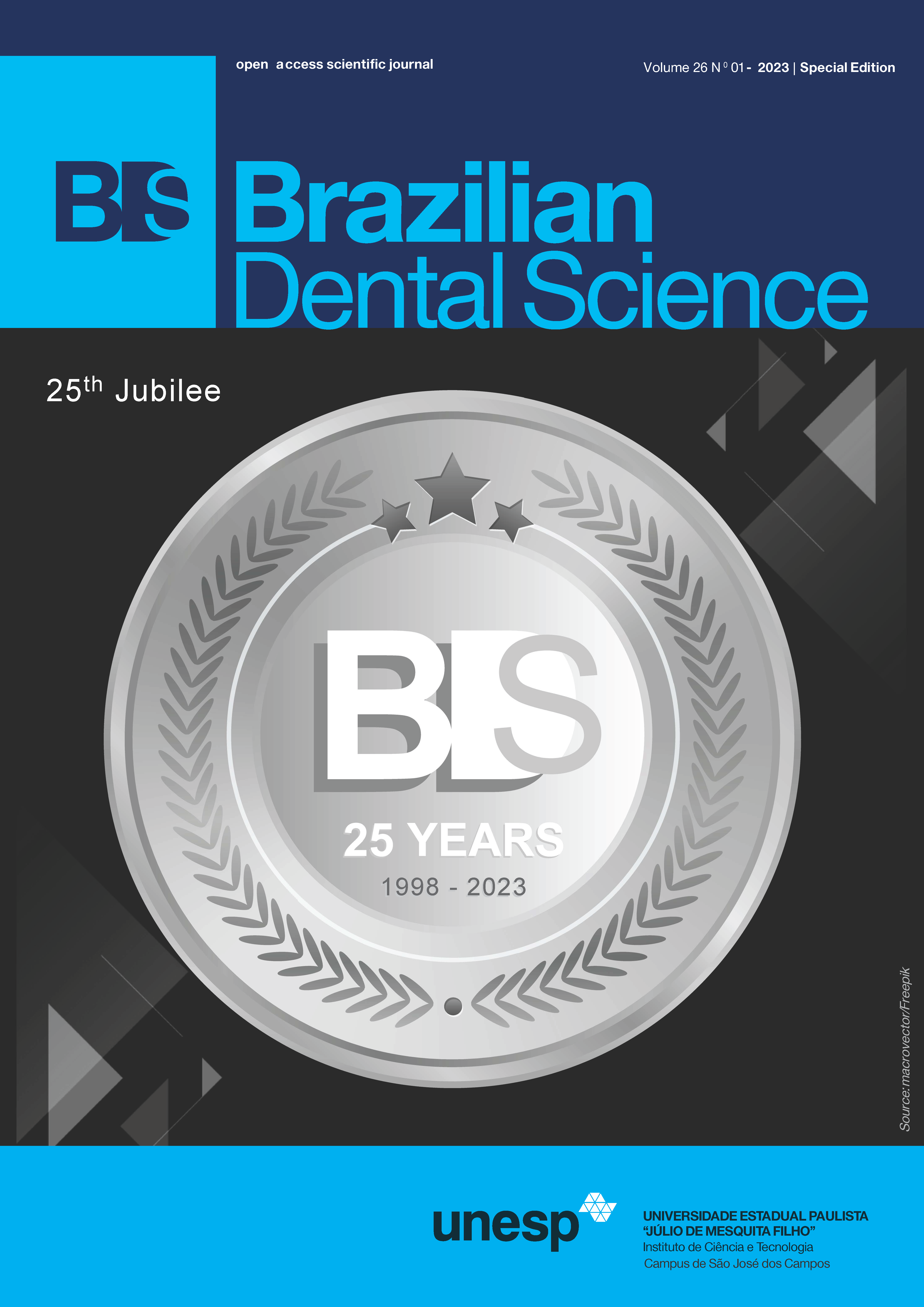Relationship between myofascial pain and facial types: an observational study
DOI:
https://doi.org/10.4322/bds.2023.e3725Abstract
Temporomandibular disorder (TMD) is a term that covers a number of clinical problems involving the masticatory muscles, TMJ and all associated structures leading to signs and symptoms such as jaw pain, otalgia, headaches and limitation of function. In this context, TMD has been related to facial type and there are three distinct facial types (euryprosopic, mesoprosopic, and leptoprosopic). Objective: The aim of this study was to investigate the correlation between myofascial pain and facial types classified by the RDC/TMD Axis I. Material and Methods: this study was composed of 64 women aged between 12 and 49 years, using data obtained from two institutions. We used the anthropometric methodology, which meets the criteria of simplicity and reliability. We also applied the Brugsh Facial Index. The individuals were classified as euryprosopic (51.56%), mesoprosopic (12.50%) and leptoprosopic (35.94%), without statistical significance among the groups (p=0,3492). Results: there is no statistical difference between the age groups (p=0.2976) and no association between facial type and age range. Conclusion: this study found that there was a correlation between myofascial pain and facial types, with the predominance of euryprosopic faced women aged between 20 and 29 years when compared with other facial types and other age groups.
KEYWORDS
Temporomandibular joint dysfunction syndrome; Anthropometric methodology; Mandibular disorders; Myofascial pain; Orofacial pain.
Downloads
Published
How to Cite
Issue
Section
License
Brazilian Dental Science uses the Creative Commons (CC-BY 4.0) license, thus preserving the integrity of articles in an open access environment. The journal allows the author to retain publishing rights without restrictions.
=================




























